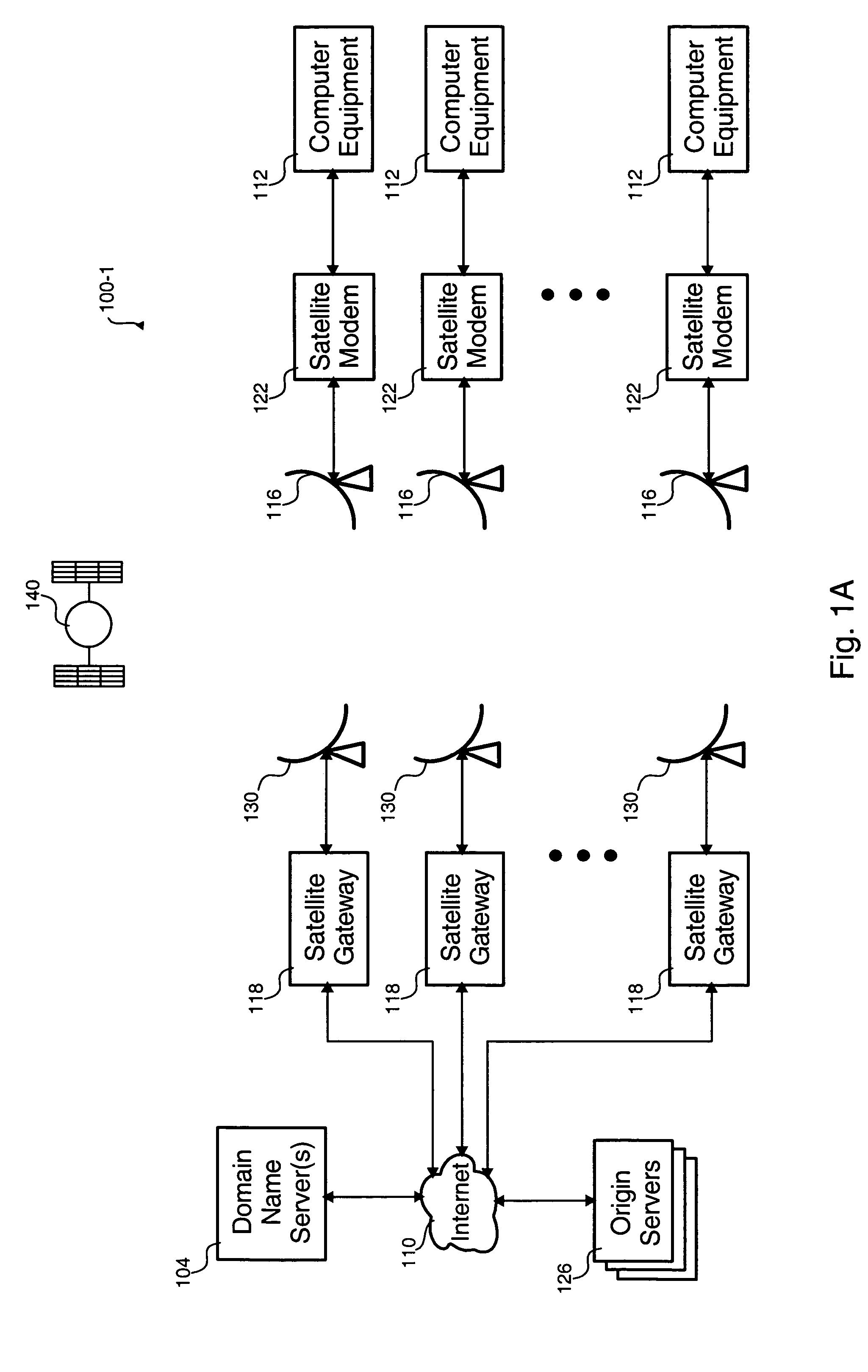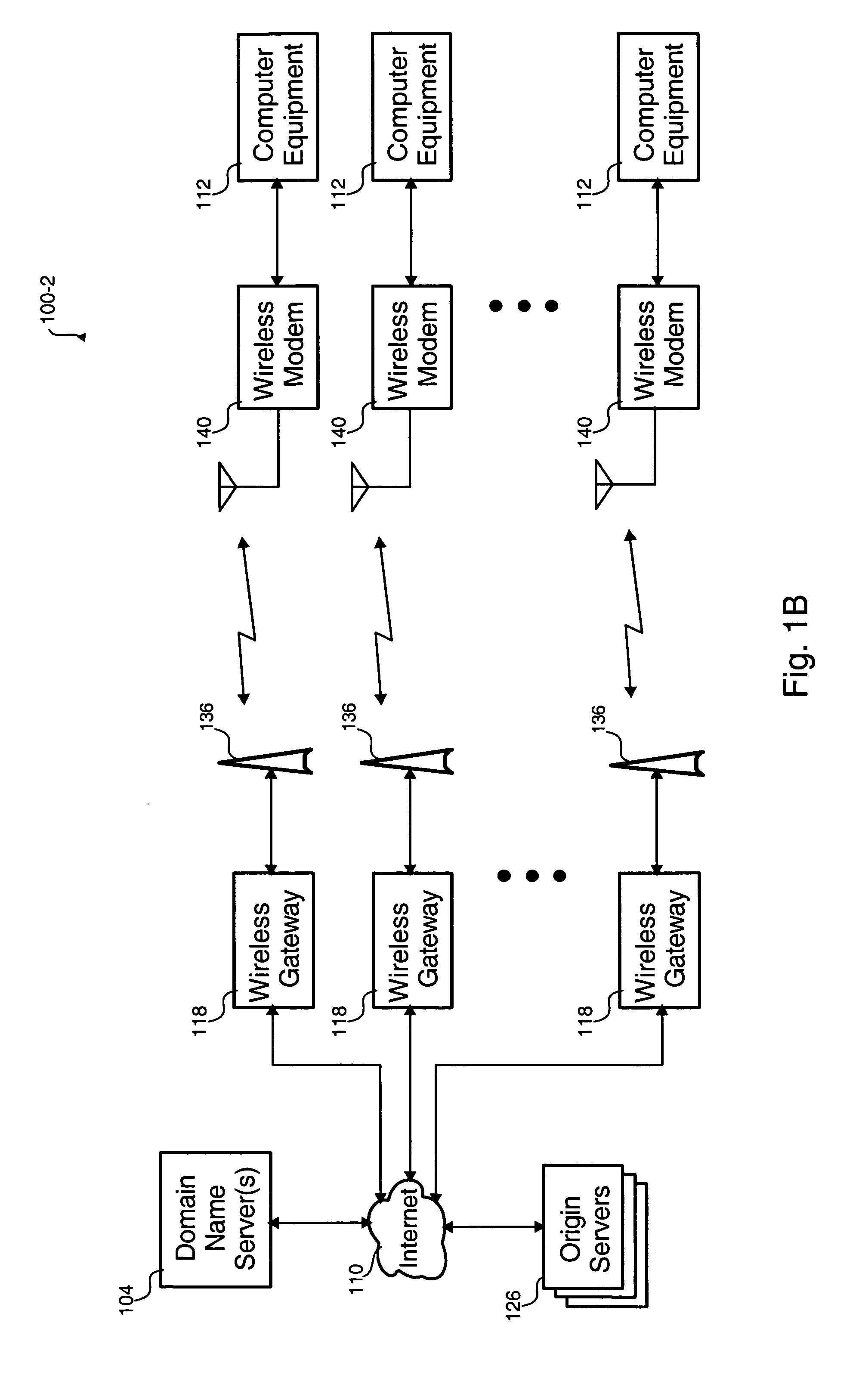HTTP acceleration over a network link
a network link and acceleration technology, applied in the field of broadband optimization, can solve the problems of packet loss imposing a significant delay burden, large propagation delay, and large transmission delay, and achieve the effect of overcoming transmission delay, limiting uplink bandwidth, and effectively increasing data carrying capacity of relatively limited uplink bandwidth
- Summary
- Abstract
- Description
- Claims
- Application Information
AI Technical Summary
Benefits of technology
Problems solved by technology
Method used
Image
Examples
Embodiment Construction
[0035] The present disclosure provides embodiments mitigate or eliminate problems of World Wide Web (WWW) browsing over a broadband satellite or other high-latency data link. One of the problems addressed by the embodiments is the reduction of user-experienced latency. In the following description, specific details are given to provide a thorough understanding of the embodiments. However, it will be understood by one of ordinary skill in the art that the embodiments maybe practiced without these specific details. For example, circuits may be shown in block diagrams in order not to obscure the embodiments in unnecessary detail. In other instances, well-known circuits, structures and techniques may be shown in detail in order not to obscure the embodiments.
[0036] Also, it is noted that the embodiments may be described as a process which is depicted as a flowchart, a flow diagram, a structure diagram, or a block diagram. Although a flowchart may describe the operations as a sequential...
PUM
 Login to View More
Login to View More Abstract
Description
Claims
Application Information
 Login to View More
Login to View More - R&D
- Intellectual Property
- Life Sciences
- Materials
- Tech Scout
- Unparalleled Data Quality
- Higher Quality Content
- 60% Fewer Hallucinations
Browse by: Latest US Patents, China's latest patents, Technical Efficacy Thesaurus, Application Domain, Technology Topic, Popular Technical Reports.
© 2025 PatSnap. All rights reserved.Legal|Privacy policy|Modern Slavery Act Transparency Statement|Sitemap|About US| Contact US: help@patsnap.com



